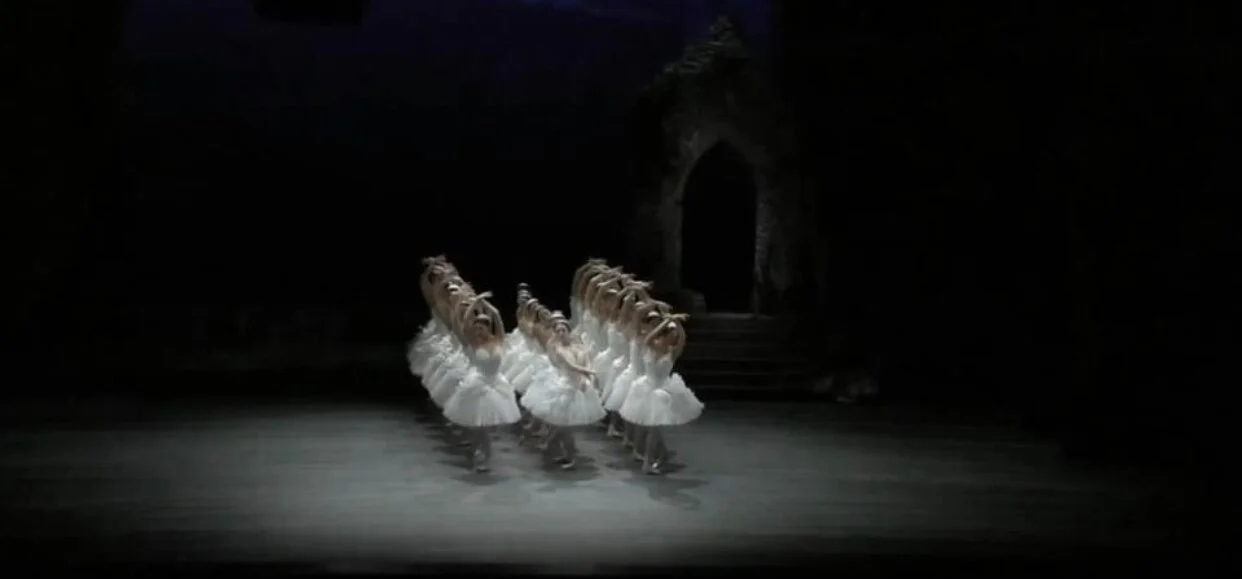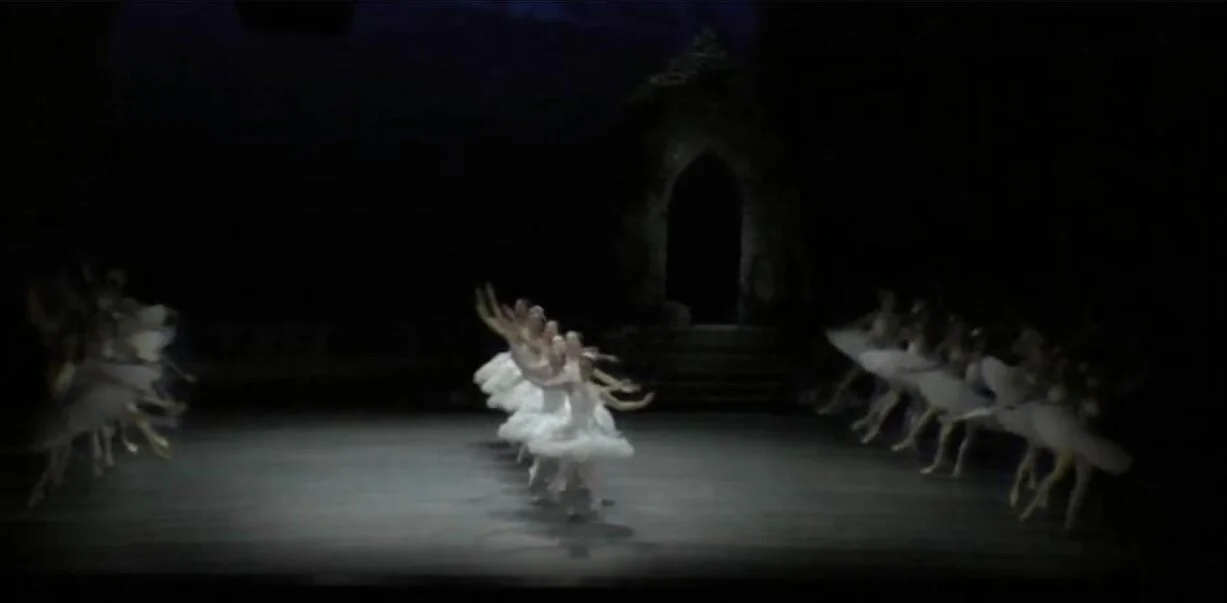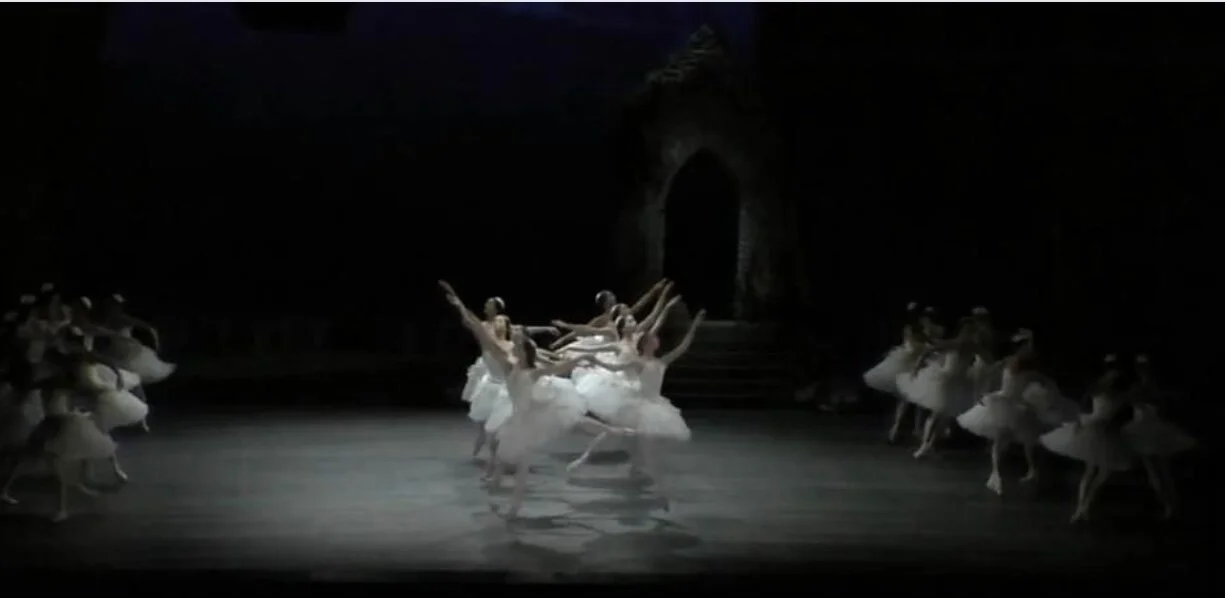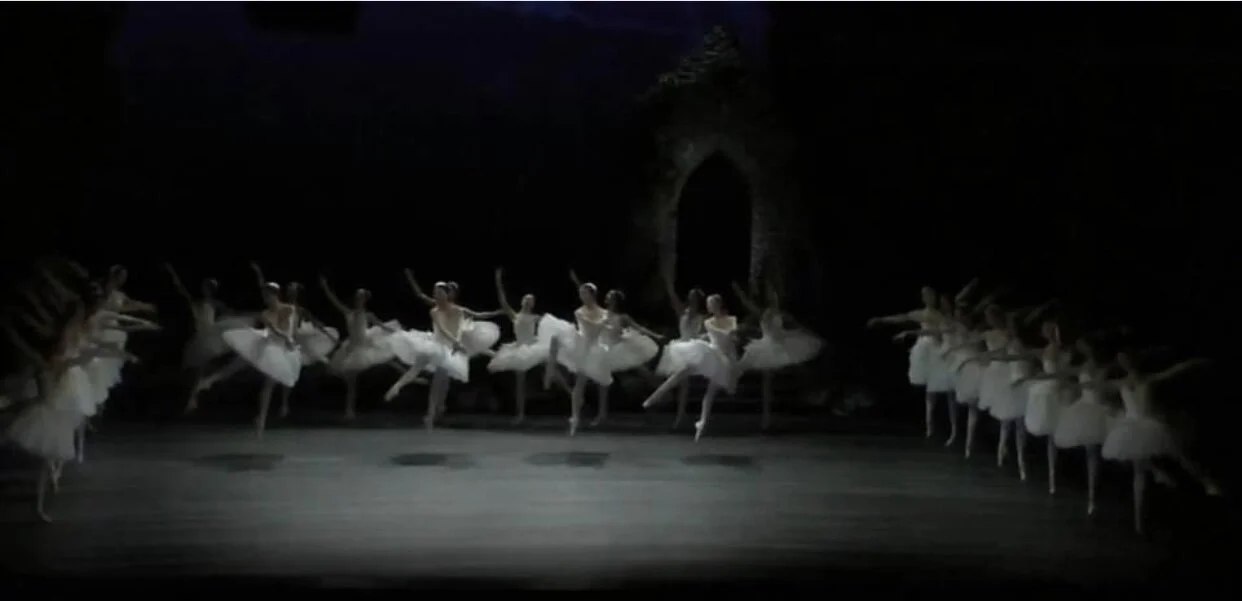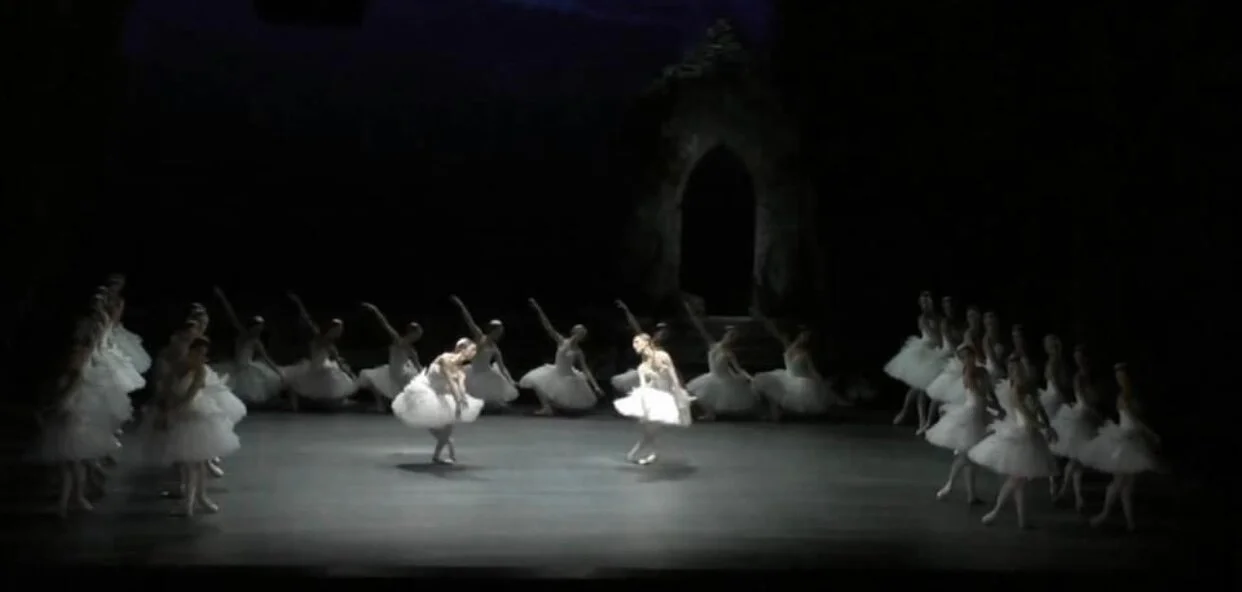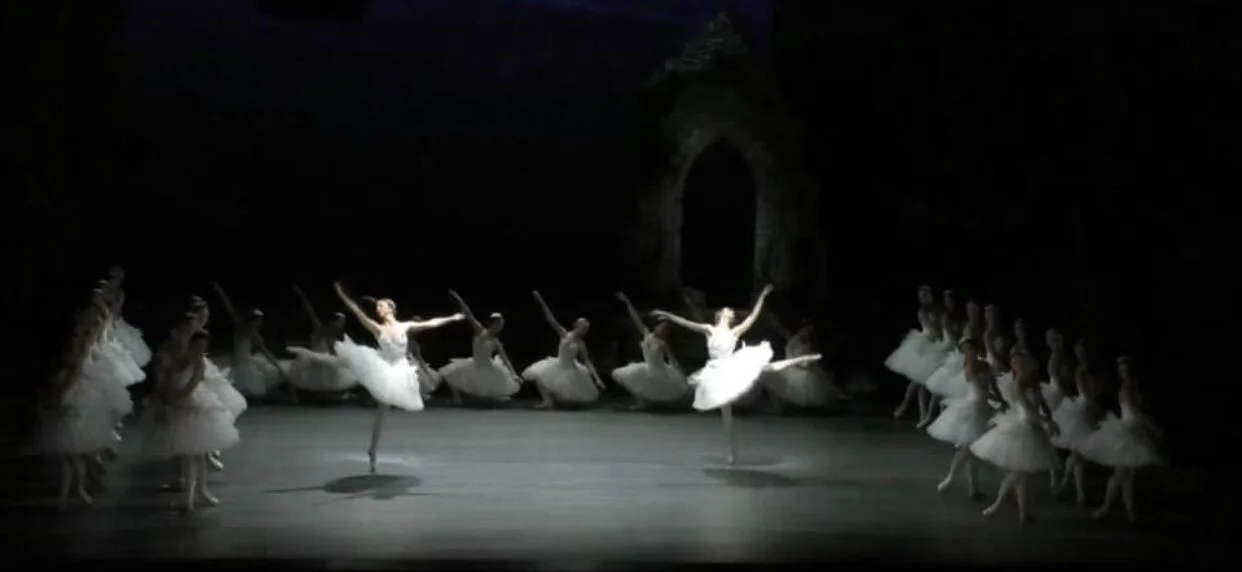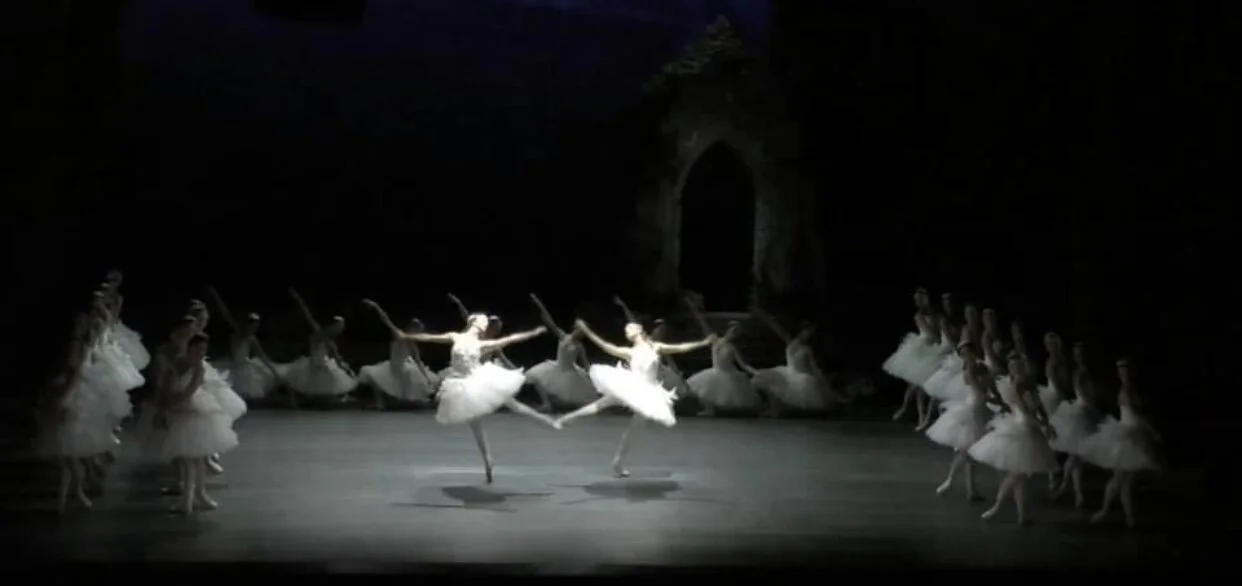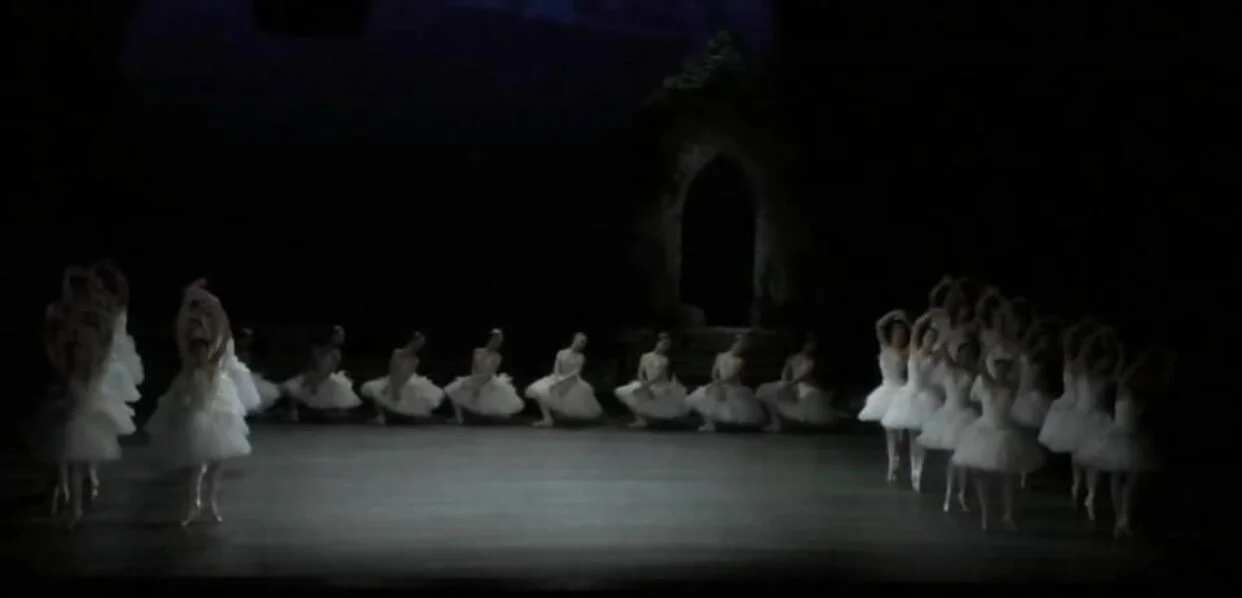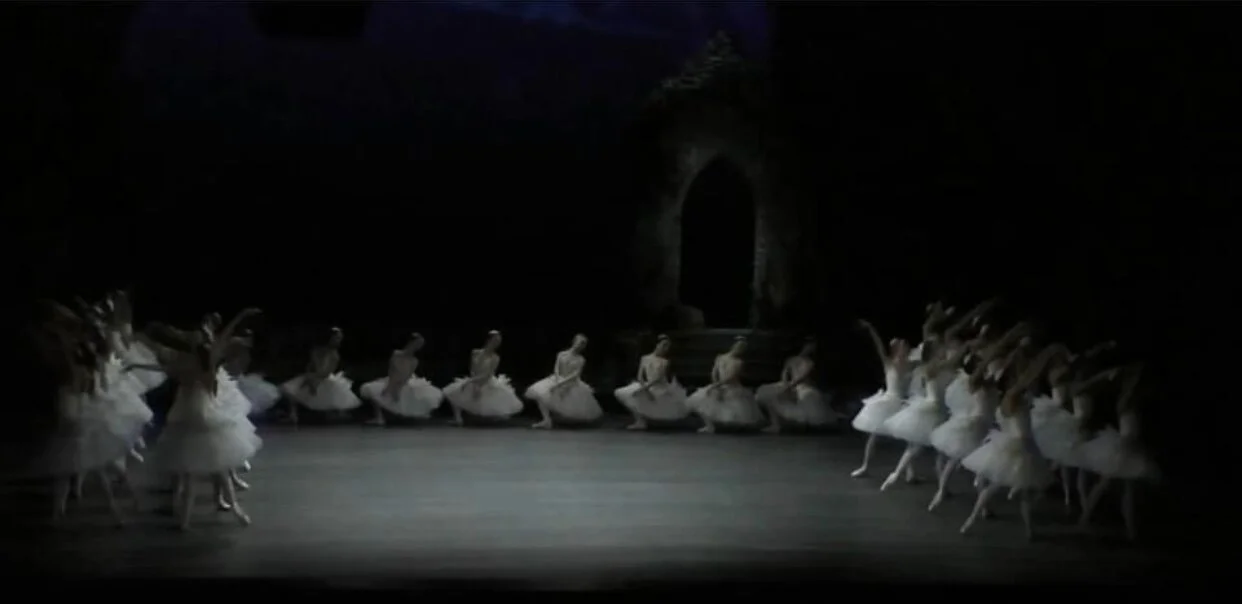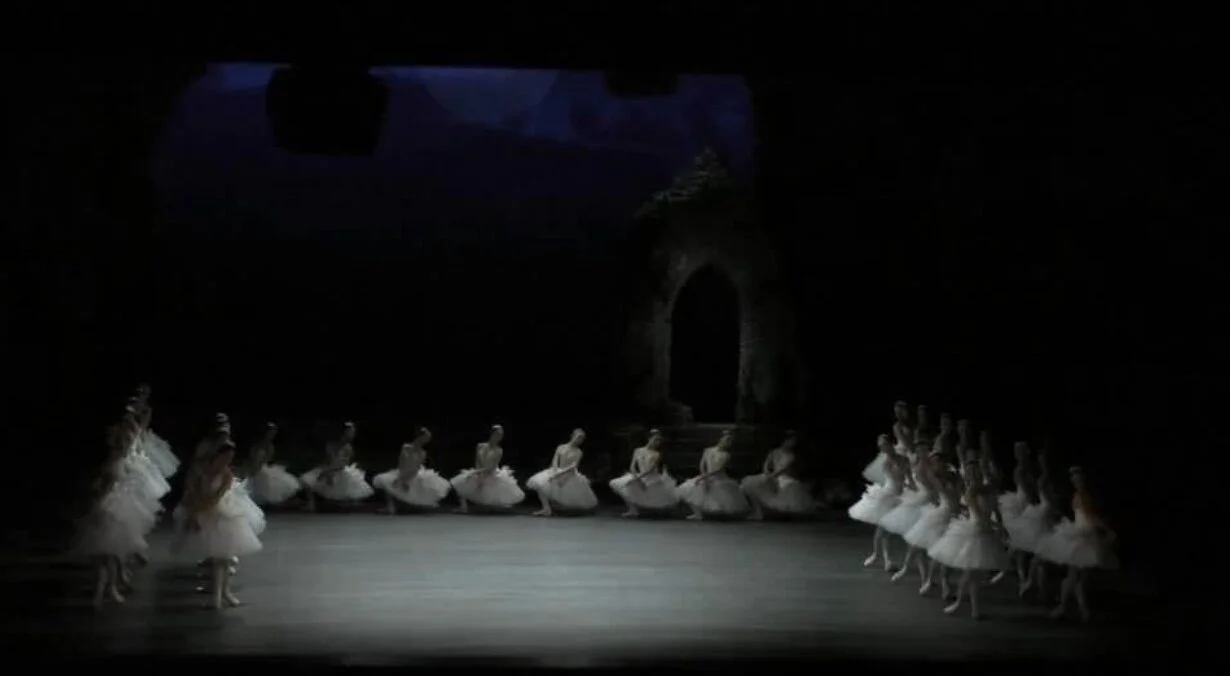Swan Lake Studies 119-130
119, 120, 121, 122, 123, 124, 125, 126, 127, 128, 129, 130. An educational video for the Royal Ballet says that the corps de ballet are the heart of “Swan Lake” without saying what that heart is apart from its perfect drill. But there’s much more to say.
After its remarkable entrance with those temps levés en arabesque, the corps goes on to deepen that impression in its great waltz. And if you watch these women only like a drill-sergeant to commend their perfect synchronicity, your soul is dead to “Swan Lake”. It’s in this waltz that the dramatic poetry of “Swan Lake” deepens its grip. These twelve freeze-frame photographs are from Alexei Ratmansky’s 2016 Zürich production: I could concentrate on its most singular features (the low arms of the central row in the opening formation, for example), but there are more important points to address. I have three main observations about Lev Ivanov’s choreography.
First: the swan-maidens are women, dancing here in expansive joy because the huntsmen have spared them from their shooting. Often the waltz is taken too slowly, suggesting that these women are still swans and are indeed slaves to the power of Baron von Rothbart; but that’s both to misunderstand the story and to be deaf to the impetus of the music. There’s a quality of breath to this waltz: you can feel that the swan-maidens are opening up to the night air, like those night-scented stocks that release their best fragrance in the dark.
Second: they have several ranks. And so they differ from the startling uniformity of (say) the bayadère shades in Petipa’s “Bayadère” or the woodland nymphs in the Vision Scene of his “Sleeping Beauty”. These swan-maidens include the junior swan-children who form the central vertical row as the waltz opens and who end as a horizontal row across the back; the main body of the corps, on left and right; and eight senior swans, two of whom dance as demi-soloists (“big swans”). Odette is queen to a true community, all under the same spell as her but textured with various levels and ranks and ages.
Third: there’s another expressive aspect of this waltz, which is a quality of confinement or limitation. Some blinder balletomanes have claimed that the swans of Matthew Bourne’s “Swan Lake” don’t have the breadth of vocabulary of ballet - but they haven’t been looking at Ivanov’s vocabulary, which is strikingly restricted. (Maybe they just prefer the beauty of Ivanov’s vocabulary, but that’s another matter; Bourne’s male swans have a wider range of movement above the waist than Ivanov’s swan-maidens.) Pas de chat; arabesque sauté; ronds de jambe sautés; entrechat-quatre; soutenu turns - these swan-maidens deliver the same steps again and again and again. In both phrasing and steps, they very obviously don’t have the serene largesse of Petipa’s shades or woodland nymphs. And as they return again and again to those arabesques sautés, those pas de chat, those ronds de jambe sautés, they build up an atmosphere whose insistency is far more expressionistic than is usually recognised. The steps are actually related to those of the “Giselle” wilis, also only dancing by night, and also certainly showing an insistent, expressionistic side. These swan-maidens are blooming in the night air, but they’re far from free: freedom is what they and Odette hope to gain during the course of the ballet. We should compare this waltz to the Prisoners’ Chorus in Beethoven’s “Fidelio”: like the prisoners (who also have two soloists), the swan-maidens gratefully greet the air, but recognise this limited privilege is the best their current state permits.
Sunday 23 August
The start of the swan-maidens’ waltz. First night of Alexei Ratmansky’s 2016 production of “Swan Lake”, Zürich Ballet.
The central row of swan-maidens was designated by Lev Ivanov to be danced by students: thus affording valuable training to ballet-school students while enriching the texture of the choreography with different layers of proficiency. First night of Alexei Ratmansky’s 2016 production of “Swan Lake”, Zürich Ballet.
The central row subdivides vertically into dancers facing left and right; but both are doing the swan-maidens’ signature step: temps levé en arabesque. First night of Alexei Ratmansky’s 2016 production of “Swan Lake”, Zürich Ballet.
First night of Alexei Ratmansky’s 2016 production of “Swan Lake”, Zürich Ballet.
The two swan-maiden lieutenants begin to play their part, an important part of the choreography’s texture in both acts of Lev Ivanov’s lakeside choreography.
The swan students are now kneeling in a horizontal row across the back of the stage. On either side, the adult corps execute academic steps worthy of George Balanchine’s “Concerto Barocco”: here, relevé fifth position for feet, legs and arms. First night of Alexei Ratmansky’s to 2016 production of “Swan Lake”, Zürich Ballet.
On either side of the stage, the swan-maiden corps now contributes characteristic steps: here off point and asymmetrical, in tendu side. First night of Alexei Ratmansky’s 2016 production of “Swan Lake”, Zürich Ballet.
First night of Alexei Ratmansky’s 2016 production of “Swan Lake”, Zürich Ballet.
